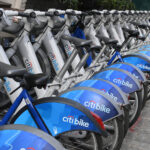Riding a motorcycle offers unparalleled freedom, and BMW dual-purpose bikes are engineered to extend that freedom across diverse terrains and conditions. However, navigating wet weather, especially on two wheels, demands a heightened sense of awareness and skill. Whether you’re commuting through a sudden downpour or embarking on an adventurous ride where rain is part of the journey, understanding how to handle your BMW dual-purpose bike in the wet is crucial for safety and enjoyment.
One of the first things seasoned riders will tell you is to respect the rain. It changes everything. The slickness of the road surface reduces your tires’ grip, affecting braking distances, cornering lean angles, and overall control. Remember the advice from experienced riders: rain riding is about finesse and gradual adaptation, not sudden changes or aggressive maneuvers.
The key to confident wet weather riding starts with smooth, deliberate inputs. Avoid jerky throttle, braking, or steering actions. Imagine there’s a delicate layer of ice beneath your tires – this mindset will encourage the gentle touch needed to maintain traction. When braking, apply both front and rear brakes progressively. The anti-lock braking system (ABS) on many modern BMW dual-purpose bikes like the GS series is a significant advantage in slippery conditions, but it’s not a substitute for cautious braking technique. Feel for the point of grip and modulate pressure accordingly.
Cornering in the wet requires a similar approach. Reduce your speed well before entering the turn, lean smoothly, and maintain a consistent throttle. Sudden changes in lean angle or throttle mid-corner can easily upset the bike’s stability. Look further ahead in corners to anticipate changes in the road surface and adjust your line accordingly. Remember that painted lines, metal drain covers, and oil patches become significantly more slippery when wet, so avoid them whenever possible.
Tires are your primary point of contact with the road, and their condition is paramount in wet conditions. Ensure your BMW dual-purpose bike is fitted with tires that have adequate tread depth. Tires designed for dual-sport or adventure riding often feature tread patterns that effectively displace water, enhancing grip in wet conditions. Consider tire pressure adjustments as well. Some riders slightly reduce tire pressure in the rain to increase the contact patch, but always adhere to manufacturer recommendations as a starting point.
Beyond technique and equipment, rider awareness plays a vital role. Increase your following distance from vehicles ahead, as braking distances are longer in the rain. Be extra visible to other road users by using your headlight, and consider wearing bright or reflective gear. Rainy conditions often reduce visibility, making it harder for car drivers to see motorcycles.
Practicing in a controlled environment, like an empty parking lot after it rains, can be immensely beneficial. Experiment with gentle braking, cornering, and acceleration to understand how your BMW dual-purpose bike behaves in the wet at lower speeds. This practice builds confidence and muscle memory, making you more prepared when you encounter rain on the road.
Riding your BMW dual-purpose bike in the rain doesn’t have to be daunting. By adopting a cautious approach, refining your technique, ensuring your bike is well-maintained, and increasing your awareness, you can confidently and safely navigate wet weather conditions and continue to enjoy the versatility and adventure that BMW dual-purpose bikes offer. Remember, the key is to respect the conditions, ride smoothly, and gradually build your skills and confidence.

